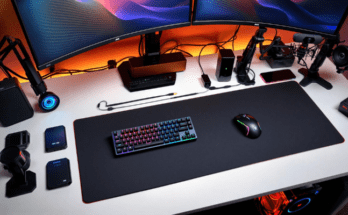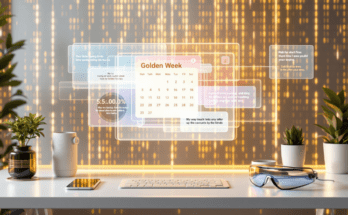Introduction
Due to a high rate of advancement in technology, the personal computer as a technology has integrating into our everyday lives for may things such as work and school to even a form of entertainment. Regardless, over time the clutter, old and Suboptimal software installations, and system settings can slow down the PC. Mastering these hitches and fine-tuning your PC results into better usability, vale productivity and a longer duration your seek machine will last you. Here, in this super detailed article, let’s explore so many aspects that would help you in the process of optimizing your PCs.
1. Always make sure you’re updating your Operating System and Drivers
Your PC operating system (OS) and drivers must be current for your devices and IT kit to operate at their best. If something is not working, removing a bug is crucial, it makes products work the way they’re supposed to work and safely. If they start to keep finding bugs, it’s a slippery slope. Follow these steps to ensure you’re running the latest versions:
– Go to settings, scroll down for the “Update & Security” option.
On the Windows Update page locate the link labeled ‘Check for updates’ and click it. If any of them are available, click on download to install them if there is any applicable update.
In the case of hardware drivers, participants should go to the manufacturer’s websites, enter their devices, and download the drivers.
2. Deactivate Unwanted Programs at the Start-up
Applications that load in the system tray can be auto executed during startup and can consequently use up a PC’ resources. If you disable these programs, you not only get faster boot time but faster overall performance. Here’s how:
To open the Task Manager press ‘Ctrl + Shift + Esc’.
Click on the “Startup” tab to check which of the programs are likely to have the most impact.
If you want to stop a certain program from running you can right click on the program and select disable.
3. Defragment Your Hard Drive
Eventually, your hard drive develops chucks of data that hinder quicker read and write times. If you focus on defragmenting your hard drive, you can help with how easy it is to get data and enhance the speed of your personal computer. This process is straightforward:
In the “Start” search for “Defragment” and click on the option of “Defragment and Optimize Drives”
Select your hard drive and then click “Optimize”.
4. It’s also possible to use System Configuration to manage Startup Programs
You might have heard many Information Technology professionals recommend System Configuration (MSConfig) for choosing the programs running during start-up and the corresponding services. To access and optimize startup programs using MSConfig, follow these steps:
Click the start button and enter “msconfig” in the quick start search field of the Win logo.
Go to startup tab, uncheck the unnecessary options and press “OK”.
– Please close and reopen your computer The changes should take effect after this.
5. Clean Up Your Hard Drive
As time goes on the hard drive that your operating system uses becomes full of temporary files, system logs, and other unimportant files that hamper the speed of the computer. A part from operating system optimization cleaning of the hard drive is recommended frequently to enhance the performance. Here’s how:
– Pull down the “Settings” option and click on ‘System’.
It will open a new window, where you have to click the Storage menu then, select the Free up space option.
Type the commands as listed here to clear out unnecessary files and system logs.
6. Buy a good Antivirus Software
Malware and viruses are especially dangerous for your PC since they work in the background hogging system resources and destabilizing your system. An antivirus must be right that protects your PC and works without disruptions for its function. Some highly recommended options include:
Cons – Microsoft Defender which comes with the Windows system.
– Bitdefender Antivirus Plus
– Norton AntiVirus
7. Upgrade Hardware Components
In case none of the optimization techniques will affect the performance of your computer, then you may need to upgrade hardware. Some components to consider include:
SSD option for the storage device so that there is faster access to information.
Additional RAM for better multi-tasking option
‑ Increased RAM to raise the processing power of both the GPU or the CPU
Conclusion
Making your PC run faster is crucial for boosting efficiency and the lifetime of your hardware and getting rid of slow and sluggish experiences. Through following all these steps as explained in this guide, you’ll be able to take your computer to high level efficiency. It is important to ensure that your system is up to date, investigate programs running at start up, empty your hard drive and get an antivirus for your device. However, also think of the replacement of other hardware components if needed. After these strategies, your PC won’t only run smoothly but it will also give you a good computing experience.




https://mazda-demio.ru/forums/index.php?autocom=gallery&req=si&img=6332
Nice share!
Hey there!
Welcome to Moviezhive.com, where blockbuster entertainment is just a click away!
Stream a vast collection of Bollywood, Hollywood, and international movies for free—no subscriptions, no hassles.
What Makes Us Special?
✔️ Thousands of movies across all genres
✔️ Zero pop-up ads for seamless viewing
✔️ Advanced zero-buffering tech for smooth playback
✔️ Fresh titles added regularly
Can’t find a movie? Request it, and we’ll upload it fast!
Watch anytime, anywhere. Visit https://moviezhive.com now and start your movie adventure!
Enjoy the Show,
The Moviezhive Team
Google Analytics Alternative